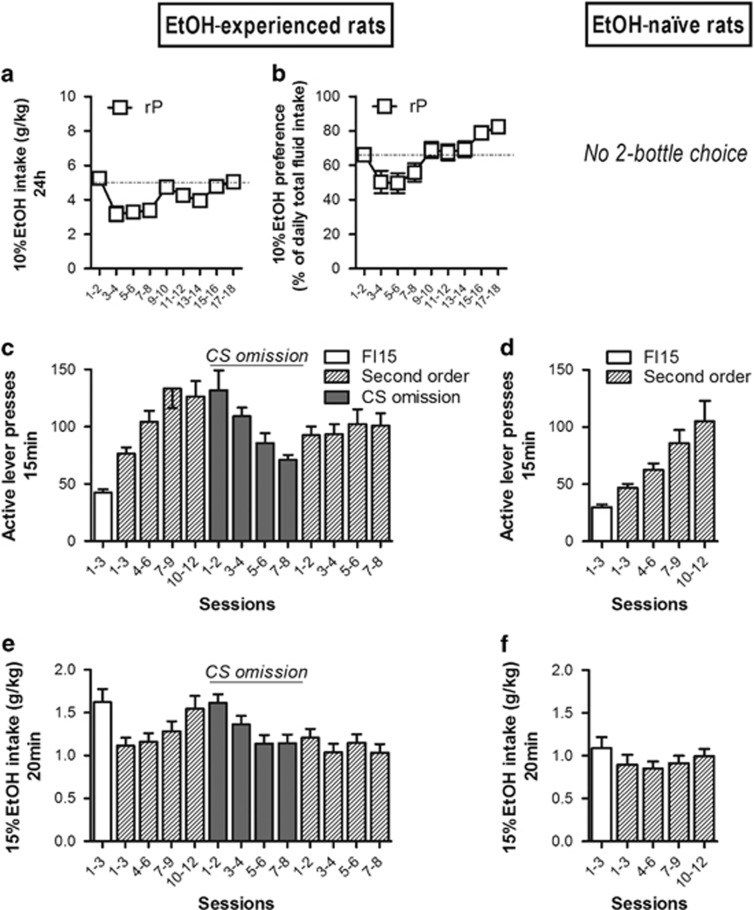Figure 1.
Voluntary alcohol intake, instrumental conditioning, and alcohol-seeking characterization in rP rats (first cohort). Rats from the first cohort were divided into two subgroups: some were exposed to alcohol in a two-bottle choice procedure (EtOH-experienced, on the left), whereas others stayed in their home cage for the same period of time (EtOH-naive, on the right). (a) The 10% alcohol intake (g/kg) and (b) percentage of alcohol preference over the total fluid intake (%) were assessed in rP (n=20) rats every 24 h using the 2-bottle choice procedure for 18 continuous days. All the animals (EtOH-experienced and EtOH-naive) were then instrumentally trained to seek 15% EtOH. Lever presses (mean±SEM) under FI15 (white bars) and under second-order schedule of reinforcement (diagonal bars) are shown in (c) and (d). Further 8 sessions, in which the CS was omitted (gray bars), were delivered to EtOH-experienced rats to assess the role of the CS as a conditioned reinforcer. Additional 8 sessions under second-order schedule of reinforcement were then delivered to reestablish CS-maintained seeking behavior (c). The acquisition of ethanol-seeking behavior in rats with no previous history of ethanol exposure was similar to that of EtOH-experienced rats (schedule × time × EtOH experience interaction (F(2, 64)=1.31; NS); EtOH experience effect (F(1, 32)=1.97; NS)). Alcohol intake (g/kg) during the 20 min drinking period earned by responding during the FI15 schedule (white bars) and the second-order schedule of reinforcement (diagonal bars) are shown in (e) and (f). EtOH intake in rP EtOH-naive rats was overall less than in rP EtOH-experienced rats (schedule × time × EtOH exposure interaction (F(2, 26)=4.34; P<0.05); EtOH experience effect (F(1, 32)=20.35; P<0.001)).

